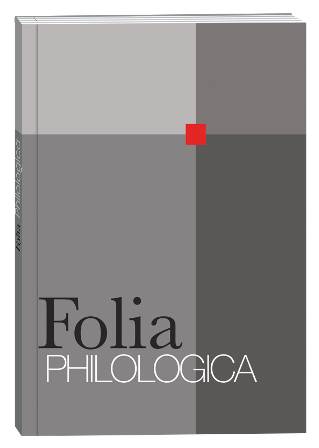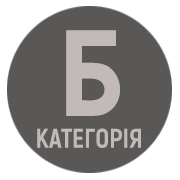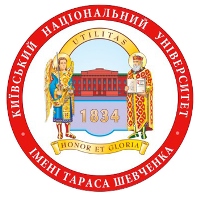СУЧАСНА МЕДІАКУЛЬТУРА Й АНТИЧНІСТЬ: ІНТЕРТЕКСТУАЛЬНІ СТРАТЕГІЇ В ЕПІЗОДІ «Я, КАРАМБІЙ» АНІМАЦІЙНОГО СЕРІАЛУ «СІМПСОНИ»
DOI:
https://doi.org/10.17721/folia.philologica/2025/9/3Ключові слова:
античність, інтертекстуальність, алюзія, ремінісценція, латинська мова, «Сімпсони», рецепціяАнотація
У статті досліджується спосіб репрезентації античної спадщини в сучасному медіапросторі на прикладі анімаційного серіалу The Simpsons (укр. «Сімпсони»). Особлива увага приділяється аналізу історичних алюзій і мовних стратегій, які використовуються для створення багатошарових культурних смислів. Метою дослідження є інтеграція лінгвістичного аналізу в традиційні підходи до вивчення рецепції античності на прикладі епізоду I, Carumbus (укр. «Я, Карамбій»). Дослідження спрямоване на з’ясування того, як алюзії, ремінісценції та мовні елементи, пов’язані з римською історією та культурою, функціонують у межах художньої стратегії сучасного медіапродукту. Методологічно робота поєднує інтертекстуальний і лінгвістичний аналіз, культурологічний коментар та порівняння оригінальної англомовної версії з українським дубляжем. Особливу увагу приділено вживанню латинських висловів – як коректних, так і з граматичними чи семантичними помилками – та їхній ролі у створенні комічного, пізнавального чи іронічного ефекту. Наукова новизна роботи зумовлена акцентом на лінгвістичному аспекті відтворення античності, що залишається недостатньо вивченим у сфері анімаційних серіалів. Уперше детально проаналізовано лінгвістичні стратегії інтеграції латини, історичних алюзій і ремінісценцій у мультсеріалі, а також розкрито випадки неточного перекладу або зміщення значень. Результати дослідження показують, що античний дискурс у серіалі виконує пізнавальну, дидактичну, іронічну та інтертекстуальну функції. Історичні постаті й події, адаптовані до сучасних сюжетів, утворюють своєрідний міжепоховий діалог. Залучення лінгвістичних засобів – від алюзій на відомі латинські сентенції до пародійних модифікацій – підсилює художній ефект і сприяє формуванню культурних асоціацій у глядача. Такий підхід свідчить про багатошаровість інтерпретацій античності в сучасному медіапросторі та відкриває перспективи подальших досліджень мовної складової культурної рецепції.
Посилання
Pomeroy, A.J. (Ed.). (2017). A Companion to Ancient Greece and Rome on Screen. Wiley-Blackwell.
Renger, A.-B., & Solomon, J. (Eds). (2013). Ancient Worlds in Film and Television: Gender and the Politics. Brill. Retrieved from: https://library.oapen.org/handle/20.500.12657/43451.
Augoustakis, A., & Cyrino, M.S. (2022). Screening love and war in Troy: fall of a city. Bloomsbury Academic.
Blanshard, A.J.L., & Shahabudin, K. (2011). Classics on Screen: Ancient Greece and Rome on Film. Bristol Classical Press.
Marciniak, K. (Ed.). (2024). Chasing Mythical Beasts: The Reception of Ancient Monsters in Children’s and Young Adults’ Culture. Universitätsverlag Winter GmbH. Retrieved from: https://library.oapen.org/bitstream/id/e542d10b-87cc-4a5c-807f-a9c792e4d329/Chasing%20Mythical%20Beasts.pdf.
Augoustakis, A., & Raucci, S. (Eds.). (2018). Epic Heroes on Screen. Edinburgh University Press.
Foster, E. (2020). Myth Reimagined: The Ancient Hero in Postmodern Television. Journal of Classical Reception, 12 (2), 112–130.
Pourcq, M. de, Haan, N. de, & Rijser, D. (Eds.). (2020). Framing Classical Reception Studies : Different Perspectives on a Developing Field. Brill.
Abellán, I.C., Balbás, M.C. de la E., Pastor, E.D., Alcocer, M. del M.R., Lozano, D.S., & Huarte, N.T. (Coords.). (2020). Happily Ever Ancient: visions of antiquity for children in visual media. JAS Arqueología. Retrieved from: https://dialnet.unirioja.es/servlet/libro?codigo=826216.
Magerstädt, S. (2022). Revival of Mythic Epics or Epic Failure? On Gods and Heroes in the Television Shows Olympus (2015) and Troy: Fall of a City (2018). In Potter, A. & Gardner, H. (Eds.), The Ancient Epic in Film and Television. (“Screening Antiquity”) (pp. 119–134). Edinburgh University Press. https://doi.org/10.3366/edinburgh/9781474473743.003.0008.
Magerstädt, S. (2019). TV Antiquity: Swords, Sandals, Blood and Sand. Manchester University Press. https://doi.org/10.7228/manchester/9781784995324.001.0001.
Magerstädt, S., & Cyrino, M. S. (2023). Introduction: The Ancient Classical World from Film to Television. Journal of Popular Film and Television, 51.1, 2–7. https://doi.org/10.1080/01956051.2023.2171681.
Marciniak, K. (2024). The Modern Argonauts. Academia, 1/81, 66–69. https://doi.org/10.24425/academiaPAS.2024.150237.
Murnaghan, S. (2011). Classics for Cool Kids: Popular and Unpopular Versions of Antiquity for Children. The Classical World, 104 (3), 339–353. URL: http://www.jstor.org/stable/41303435.
Richards, J. (2008). Hollywood’s Ancient Worlds. Bloomsbury Publishing.
Cyrino, M.S. (Ed.). (2008). Rome Season One: History Makes Television. Blackwell Publishing Ltd. https://doi.org/10.1002/9781444301540.
Cyrino, M.S. (Ed.). (2015). Rome, Season Two: Trial and Triumph. Edinburgh. Edinburgh University Press.
Augoustakis, A., & Cyrino, M.S. (Eds.). (2017). Starz Spartacus: Reimagining an Icon on Screen. Edinburgh University Press. https://doi.org/10.3366/edinburgh/9781474407847.001.0001.
Stern, G. (2020). The Odyssey as Told on The Simpsons. In Abellán, I.C., Balbás, M.C. de la E., Pastor, E.D., Alcocer, M. del M.R., Lozano, D.S., Huarte, N.T. (Coords.), Happily Ever Ancient: visions of antiquity for children in visual media (pp. 177–187). JAS Arqueología. Retrieved from: https://dialnet.unirioja.es/servlet/articulo?codigo=8042654.
Potter, A. & Gardner, H. (Eds.). (2022). The Ancient Epic in Film and Television. (“Screening Antiquity”). Edinburgh University Press.
Elliott, A.B.R. (Ed.). (2014). The Return of the Epic Film: Genre, Aesthetics and History in the 21st Century. Edinburgh University Press. Retrieved from: https://www.jstor.org/stable/10.3366/j.ctt9qdr2s.
Baranova, S.V. (2019). Problemy perekladu form komichnoho ukrainskoiu movoiu (na materiali anhlomovnykh teleserialiv) [Problems of translating comic forms into Ukrainian (based on English-language television series)]. Naukovyi visnyk Mizhnarodnoho humanitarnoho universytetu – Scientific Bulletin of the International Humanitarian University, 40 (3), 62–65 [in Ukrainian]. Retrieved from: https://essuir.sumdu.edu.ua/handle/123456789/84970.
Bryukhovetska, L., & Kanivets, A. (2018). Ukrainska animatsiia [Ukrainian animation]: collection of articles. Fenix [in Ukrainian].
Dolnyk, I.M. (2020). Problemy perekladu vlasnykh imen v amerykanskykh animatsiinykh serialakh [Problems of translating proper names in American animated series]. In Fakhovyi ta khudozhnii pereklad: teoriia, metodolohiia, praktyka – Professional and literary translation: theory, methodology, practice (pp. 177–182). Agrar Media Group [in Ukrainian].
Hromiak, R.T., Kovaliv, Yu.I., & Teremko, V.I. (Eds.). (2007). Literaturoznavchyi slovnyk-dovidnyk [Literary Reference Dictionary]. Akademiia [in Ukrainian].
Pidhrushna, O.H. (2022). Movni ta pozamovni aspekty lokalizatsii multserialiv ukrainskoiu movoiu (na prykladi anhlomovnoho multserialu My Little Pony: Friendship Is Magic) [Linguistic and extralinguistic aspects of English animation series localization in Ukrainian (based on My little pony: Friendship is magic)]. Zakarpatski filolohichni studii – Transcarpathian Philological Studies, 2/25, 107–116. https://doi.org/10.32782/tps2663-4880/2022.25.2.20 [in Ukrainian].
##submission.downloads##
Опубліковано
Як цитувати
Номер
Розділ
Ліцензія

Ця робота ліцензується відповідно до Creative Commons Attribution 4.0 International License.









